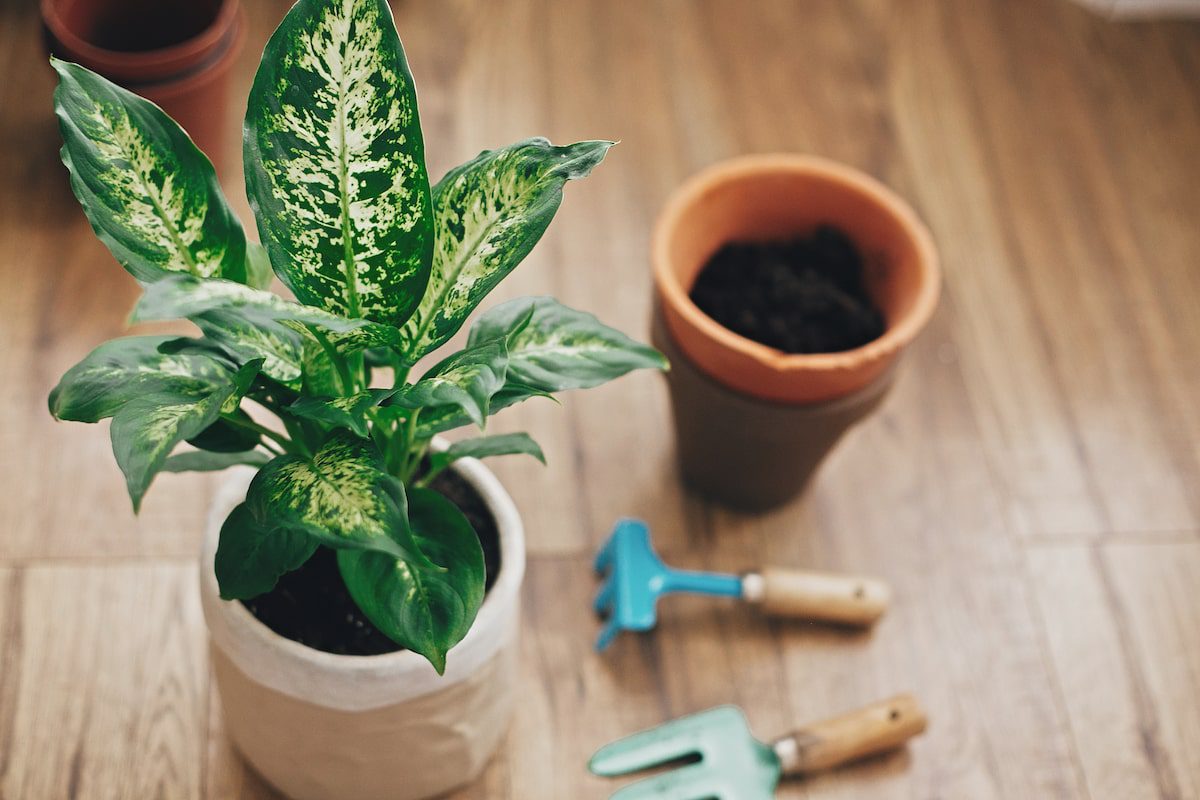You’re crazy about plants, we get it! You can’t abstain from purchasing new plants every time you visit a green nursery, we get that too! Growing a Dumb Cane plant would make an excellent addition to your plant collection. Or shall we say home jungle?
A Dumb Cane plant is versed as a ‘remarkable house plant’. And it is most certainly not a ‘dumb’ plant at all! It has the most adaptable nature and can impart nurturing radiance to your house with its 6-8 feet tall bushy leaves. To find out more about this lovely gift from nature, consider reading this.
In this article, we will introduce you to the specs of Dieffenbachia. After you’re well-acquainted with its nature, we will progress towards its planting and growth. The aspects of pruning and propagation will also be briefly discussed.
And do not worry at all if you’re familiar with any of those terms. We got your back!
P.s: Here’s an informative video on the Dumb Cane plant.
Table of Contents
Meet Dieffenbachia: Basic Knowledge And Origins
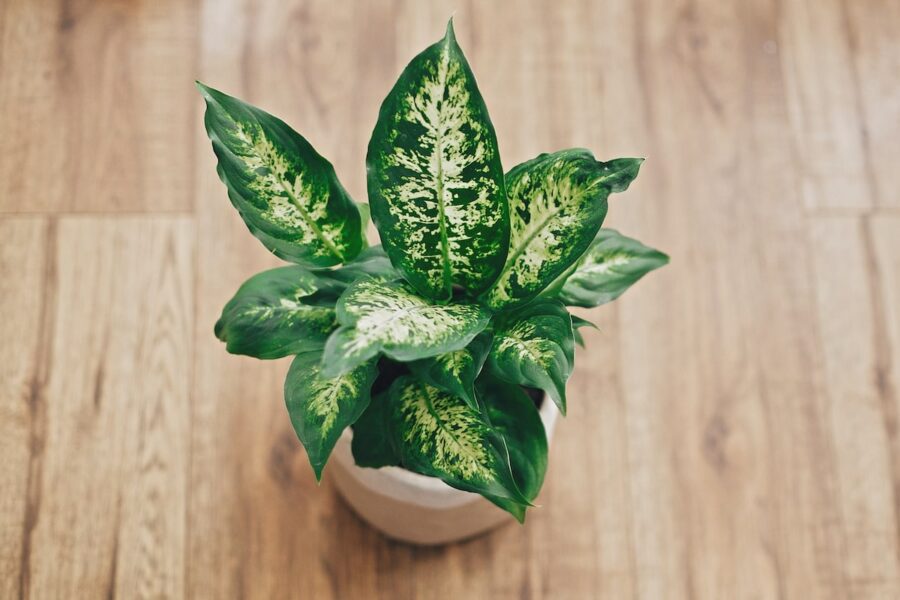
Before we go any further, let’s get acquainted with this bad boy. The Dieffenbacias can grow up to 10 feet tall and sprout ovate leaves that span a length of 20 inches. However, when grown indoors, their height is limited to about 3-6 feet.
The Dumb Cane plant has a growth rate of 2 feet per annum and is a seasonal bloomer.
| Family Type | Araceae |
| Botanical Name | Dieffenbachia Amoena |
| Plant Type | Perennial, Herbaceous |
| Size | Up to 10 feet in height, 2-3 feet in width |
| Native Area | The Caribbean, South America |
| Sun Exposure | Partial shade or bright indirect sunlight |
| Soil Consistency | Peaty and well-drained: |
| Soil pH | Mildly acidic 6.1-6.5 |
| Flower Color | Off-white spadix |
| Toxicity | Toxic to animals and humans |
| Common Pests | Spider Mites |
Varieties Of The Dumb Cane Plant
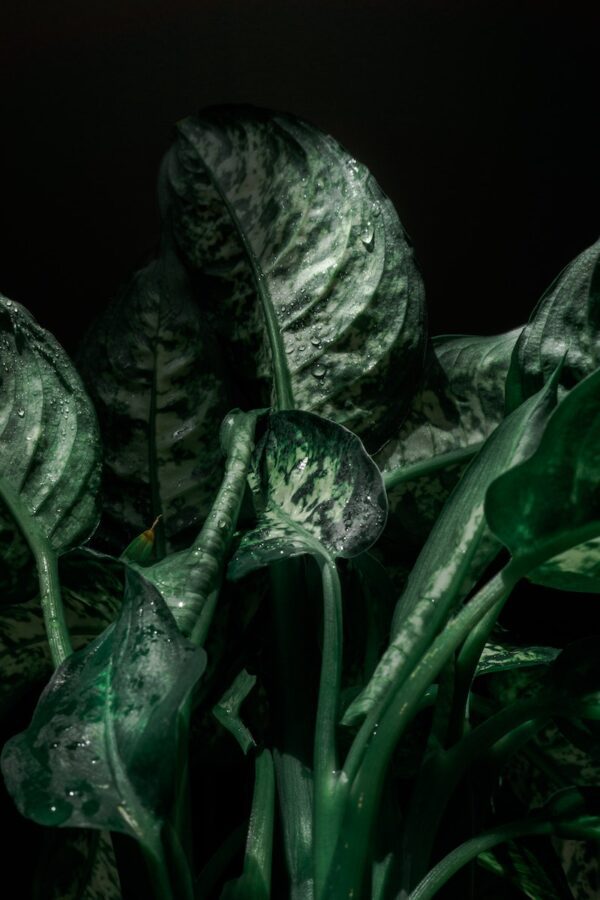
- Deiffenbachia Segguine
This is the most popular variety of the Dumb Cane. It can grow up to 10 feet tall. The Segguine type has ovate leaves with green margins with a yellow filling.
- Dieffenbachia Maculata
- Maculata is further divided into sub-categories based on its leaves. They are mentioned below:
- Perfection
- Rudolph Roehrs
- Superba
- Camille
P.s: aren’t these the most luxury cultivar names you’ve ever heard?
- Dieffenbachia Amoena
This cute variant only grows up to 6 feet at maximum. Its leaves are also smaller with more variegation.
How To Plant Dieffenbachia Or The Dumb Cane?
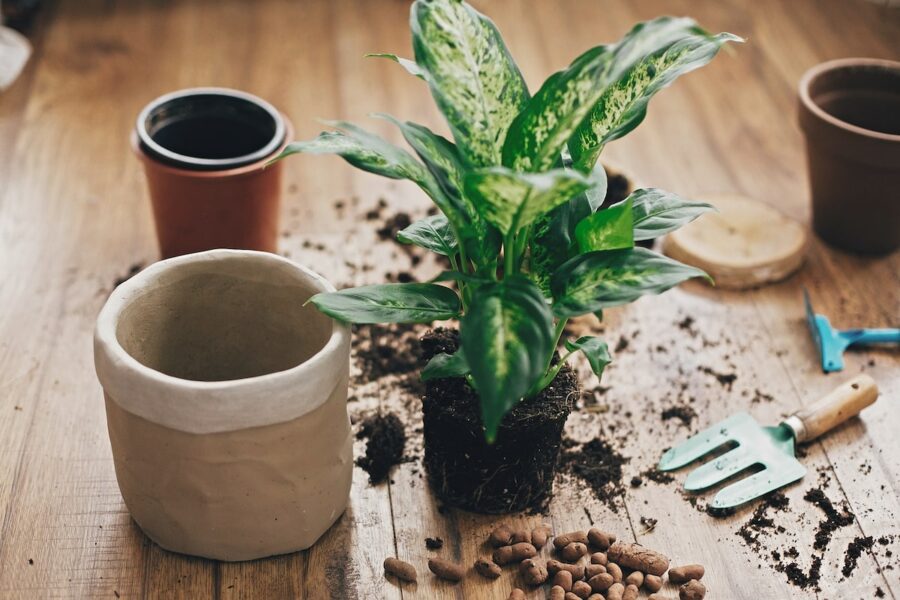
- The first thing you’ll be needing is a container, of course. The container or pot should be at least 1/3rd wider than the root ball of the Dieffenbachia itself. If you’re starting with seeds, the process will take much longer.
- Fill the container up to 1/3rd of its capacity with a potting mix. You can purchase these online or get them at your local farmer’s store. I would advise you to get indoor potting mixes if you wish to grow this baby indoors. Make sure the consistency of the mix is peaty.
- Place the Dumb Cane in the center and fill in the rest of the container with the potting mix.
How To Care For The Dumb Cane Plant?
Described below briefly are pre-requisites on planting and caring for a Dumb Cane plant so that it survives, thrives, and grows flawlessly!
1. Sunlight Exposure
These plants are great for indoors, thus the provision of indirect light is deemed adequate for their growth. Placing them beside windows and rotating them in regular intervals over time would prove to be beneficial for its growth.
2. Soil
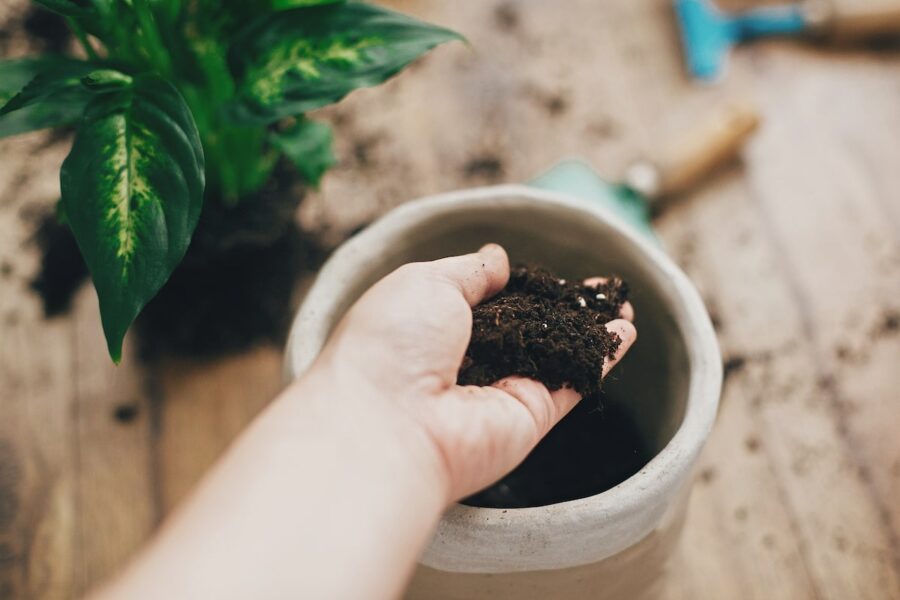
As mentioned earlier, I’d recommend potting mixes for the Dumb Cane. Aerated and well-draining soil is what fuels this plant to grow well.
3. Watering
This part requires good balance. During their growing season, The Cane needs to be watered bi-weekly. You may cut down this frequency to once per week during the winters.
Make sure not to overwater this plant, it’ll cause rotting!
4. Temperature
Warm conditions suit this plant the best. 65-75 degrees Fahrenheit is the optimal temperature for its growth.
Any drop below 60 degrees Fahrenheit would lead to excessive shedding of the lower leaves.
5. Fertilizing Frequency
Pack the Dumb Cane with a diluted fertilizer every 5-6 weeks.
Propagation Of The Dumb Cane Plant

Propagation caters to the birth of new plants, in this case, more Dumb Canes. If you wish to find out more about the types of propagation, click here.
There are three ways to propagate Dieffenbachia:
1. By Root Division
This is done when you would re-pot the plant (more on this below). Simply snip off some offsets and plant them into a new pot.
2. Via A Stump
You would have to behead the top of an old dieffenbachia and plant it into its own pot. But this time around, you would need to infuse the stump with a rooting hormone to propagate its growth.
3. With Cane Cuttings
Simply lay the cuttings horizontally into a new pot and they will start growing. Make sure to water them frequently.
Pruning
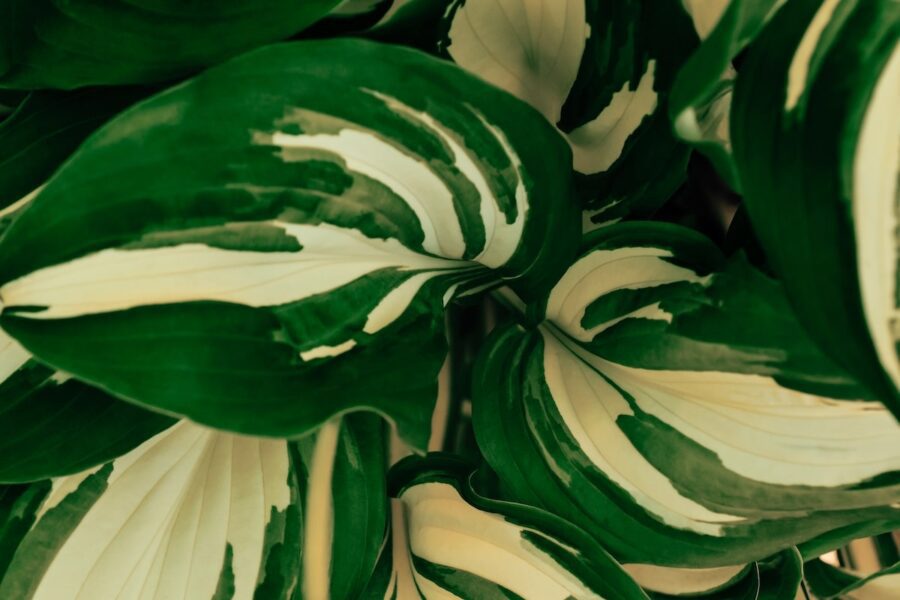
Simply put, pruning is the process of removing excess parts of the plant to aid its growth. These parts are also removed when they become detrimental to the health of the plant.
Dieffenbachia would start shedding leaves and that’s when you should consider pruning it. Grab a pair of sharp pruners and chop a few parts that have grown excessively.
Find out more about pruning here.
Re-Potting The Dumb Cane
There are a few stress signals that indicate that the Dumb Cane needs re-potting. They are listed below:
- Crowding
- Excess shedding of leaves
- Roots popping out
It is advised to re-pot Deiffenbachai every year. Make sure to grab a larger container each time you re-pot the plant to accommodate its growth.
Challenges & Solutions
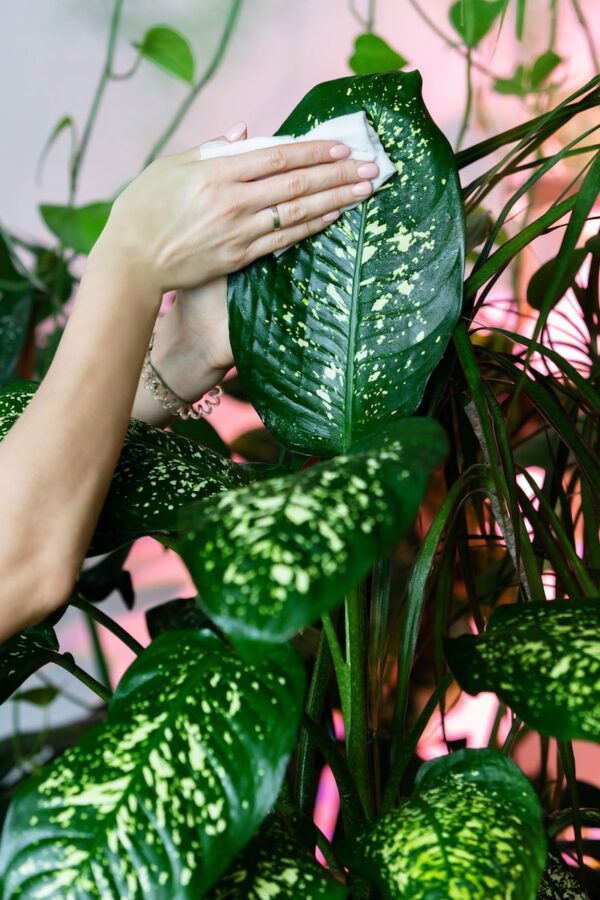
Yellowing of leaves
This can either be caused by under/over-watering the plant or due to the lack of Nitrogen in the soil.
Drooping Leaves
This is a sign that the Dumb Cane is getting a bit too much sun exposure. Move it to a relatively shadier place to avoid the drooping of leaves.
Crisping Of Leaves
If the margins of the leaves become crispy, you’re under-watering the plant.
Ask Away: The FAQ Section!
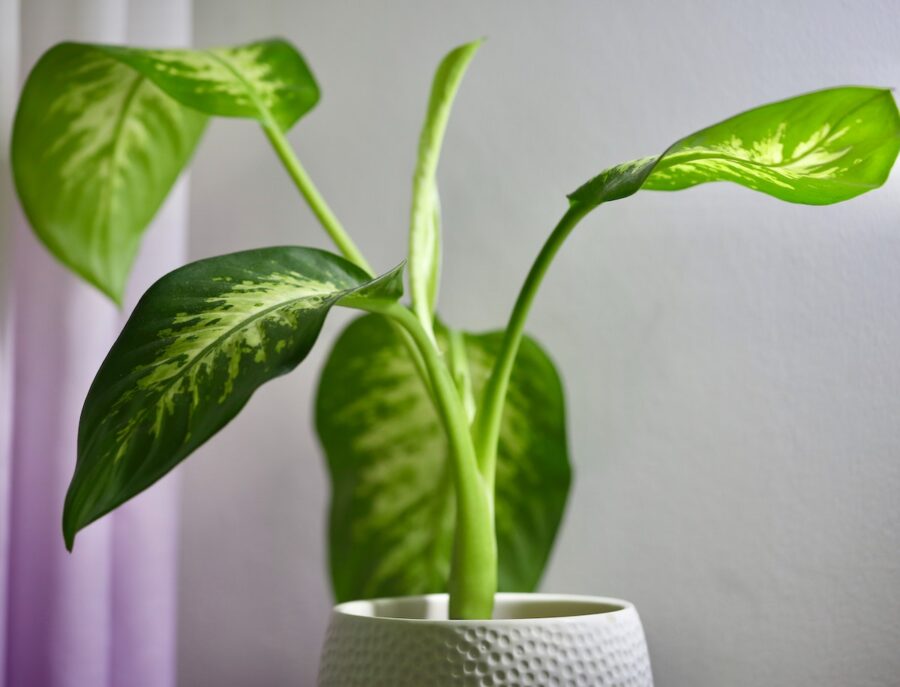
Absolutely. It is toxic to both humans and animals.
Browning of the leaves may indicate uneven watering of the Dieffenbachia. Make sure to regulate its water cycles. If the brown leaves start curling, it indicates an excess of fertilizer packing.
Not at all. These are very low-maintenance house plants.
If you’re prompt and regular with the maintenance of Dumb Canes, they can live up to several years.
Once or twice a week.

